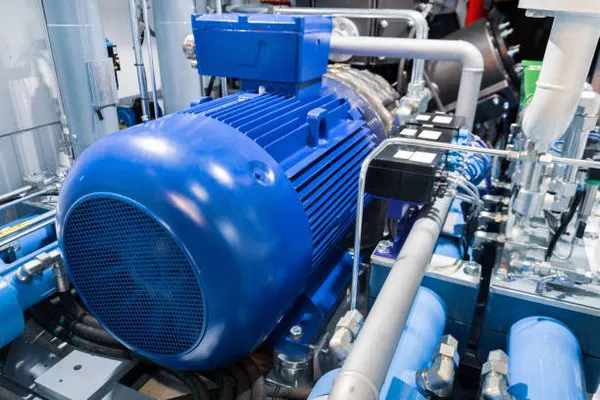Compressors play a pivotal role in various industries, serving as the workhorses behind numerous processes that rely on the compression of gases or vapors. From refrigeration and air conditioning to industrial manufacturing and energy production, compressors are indispensable in maintaining efficient systems. This article delves into the inner workings of compressors, shedding light on the fundamental principles that drive their functionality.
Basic Principles of Compression
At its core, a compressor is a mechanical device designed to increase the pressure of a gas by reducing its volume. This is achieved through the manipulation of thermodynamic principles, primarily governed by Boyle’s Law and Charles’s Law. Boyle’s Law states that the pressure of a gas is inversely proportional to its volume at constant temperature, while Charles’s Law dictates that the volume of a gas is directly proportional to its temperature at constant pressure.
Reciprocating Compressors
One common type of compressor is the reciprocating compressor, which operates on the principle of positive displacement. In a reciprocating compressor, a piston moves back and forth within a cylinder, creating a suction stroke and a compression stroke. During the suction stroke, the piston moves downward, creating a vacuum that draws in the gas. Subsequently, during the compression stroke, the piston moves upward, compressing the gas and increasing its pressure.
The reciprocating motion of the piston is typically driven by an electric motor or an internal combustion engine. To enhance efficiency, some reciprocating compressors incorporate multiple stages, with each stage further compressing the gas to the desired pressure level. Intercoolers between stages help manage the temperature rise associated with compression, optimizing performance.
Rotary Compressors
In contrast to reciprocating compressors, rotary compressors operate on a continuous, rotary motion. One prevalent type is the rotary screw compressor. In a rotary screw compressor, two intermeshing helical screws rotate within a chamber, drawing in and compressing the gas as it moves through the screw threads. This continuous process enables a steady flow of compressed gas, making rotary screw compressors suitable for applications with varying demand.
Another type of rotary compressor is the vane compressor, where vanes mounted on a rotor sweep along the inner surface of a stator. As the rotor turns, the vanes trap and compress the gas, ultimately discharging it at an elevated pressure. Rotary compressors are known for their smooth operation and are often chosen for applications requiring a constant and reliable compressed gas supply.
Centrifugal Compressors
Centrifugal compressors, on the other hand, utilize a different mechanism based on dynamic compression. In a centrifugal compressor, a high-speed impeller accelerates the gas, imparting kinetic energy to it. The gas then enters a diffuser, where its kinetic energy is converted into pressure energy. The result is a significant increase in pressure.
Centrifugal compressors are preferred for high-capacity applications, such as air conditioning systems and large industrial processes. Their ability to handle a continuous flow of gas and provide a high compression ratio makes them suitable for scenarios where a consistent, high-volume compressed gas supply is crucial.
Cooling and Lubrication
Regardless of the type of compressor, managing heat generated during compression is essential to prevent overheating and ensure optimal performance. Compressors often incorporate cooling mechanisms, such as air or water-cooling systems, to dissipate heat and maintain operating temperatures within acceptable limits.
Lubrication is another critical aspect of compressor operation. It reduces friction between moving parts, minimizing wear and extending the lifespan of the compressor. Lubrication can be achieved through oil injection, where a controlled amount of oil is introduced into the compression chamber, or by incorporating oil-free technologies, which eliminate the need for lubricating oil altogether.
Conclusion
Compressors are intricate machines that serve as the backbone of numerous industrial processes, from powering pneumatic tools to facilitating the production of various goods. Understanding the fundamental principles of compression, the types of compressors available, and the importance of cooling and lubrication provides valuable insights into their operation.
Whether it’s the reciprocating motion of a piston, the continuous rotation of screws, or the dynamic acceleration in a centrifugal compressor, each type of compressor has its unique advantages and applications. As technology continues to advance, compressors evolve to meet the growing demands of diverse industries, ensuring the efficient and reliable compression of gases for years to come.

